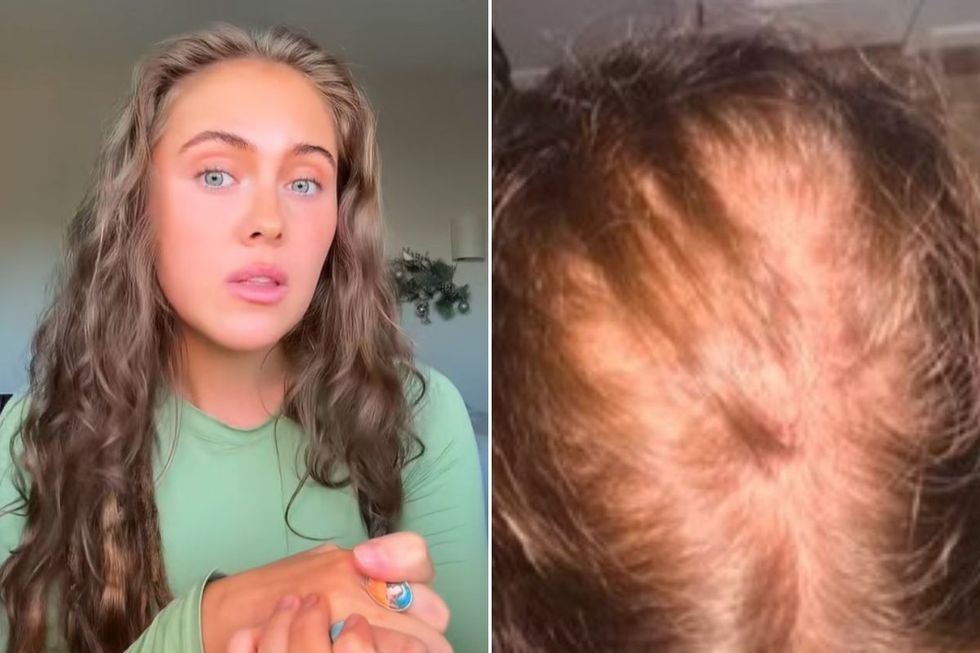'I grew my hair back after severe thinning - a proven treatment works wonders if you use it religiously'

Minoxidil can be used as a treatment for both male and female pattern baldness
Don't Miss
Most Read
Hair loss affects both men and women and stems from a range of factors, some of which include genetics, age, hair care, hormonal imbalance, stress, and medication.
Gradual hair thinning or sudden hair loss can make those experiencing it feel disheartened and powerless, but hope is not lost. With the right tricks, many forms of hair loss are reversible.
Beauty, health, and wellness creator Gracie (who goes by @thegraciecollins on TikTok) shared how she "grew her hair back from severe hair thinning" and maintains it to this day.
Gracie revealed that she uses a Derma Roller on her scalp two or three twice per week to stimulate hair growth, as well as a Derma Stamp.
She takes a daily hair growth supplement - Viviscal - which contains vitamins to boost hair growth, plus pumpkin seed supplements to block the production of DHT, the hormone that can contribute to hair loss.
The hair care enthusiast also swears by minoxidil, a medication used for the treatment of pattern (hereditary) hair loss, the most common form that affects women.
Hailed by many dermatologists and trichologists, minoxidil is an expert-approved topical medication that combats the condition.
It is also recommended by the NHS, with the Government department calling it "a proven treatment for female-pattern baldness".
 'I grew my hair back after severe thinning - a proven treatment worked wonders when I used it religiously' |
'I grew my hair back after severe thinning - a proven treatment worked wonders when I used it religiously' | TikTok/@thegraciecollins
The health experts at Boots added: "After using it, many women see improvements, including a slowing or stopping altogether of balding, as well as thicker hair.
"It's not fully understood how minoxidil works for hair loss, but it's thought to increase blood supply to the hair follicle.
"It helps to prevent further hair loss and encourages hair regrowth when applied directly to the scalp where the hair loss has occurred.
"Although baldness occurs more frequently in men - around half of all men will experience some hair loss by the age of 50 - it can also occur in women.

Gradual thinning or sudden hair loss can feel disheartening, but hope is not lost
|GETTY IMAGES
"Minoxidil can be used as a treatment for both male and female pattern baldness. However, there are different minoxidil products for men and women, so it's important to choose one labelled 'for women' or ask your pharmacist if you're not sure."
But experts warned that if you stop using minoxidil, any areas of hair regrowth will "disappear" in around three to four months, so consistent use is essential.
Indeed, Gracie said: "This is a routine you have to be religious about - you can't do it two or three times a week and expect to see results.
"That's just not going to happen. Especially if you're experiencing severe hair thinning, you have to be religious about it, every single day."
Stressing that minoxidil is not a quick-fix solution, consistency is totally key.
"Just like going to the gym to maintain your physique and your results, you have to do the same with this," Gracie concluded.
It's crucial to note that if you're trying to tackle hair loss, you should always consult your healthcare practitioner first.
A professional can give you tailored guidance on any hair growth tools, supplements, treatments, and medications you wish to invest in.
LATEST DEVELOPMENTS:
For those looking to take minoxidil specifically, Boots recommended consulting your GP or pharmacist beforehand to check it is suitable for you.
As with most medicines, minoxidil isn't suitable for everybody; among others, those who are pregnant, have high blood pressure, or are suffering from psoriasis should not take it.
It's also important to check that minoxidil will not interfere with any existing medication you are taking.
Anyone taking medicine that contains tretinoin, corticosteroids, dithranol, petrolatum, or guanethidine should check this with their GP.











